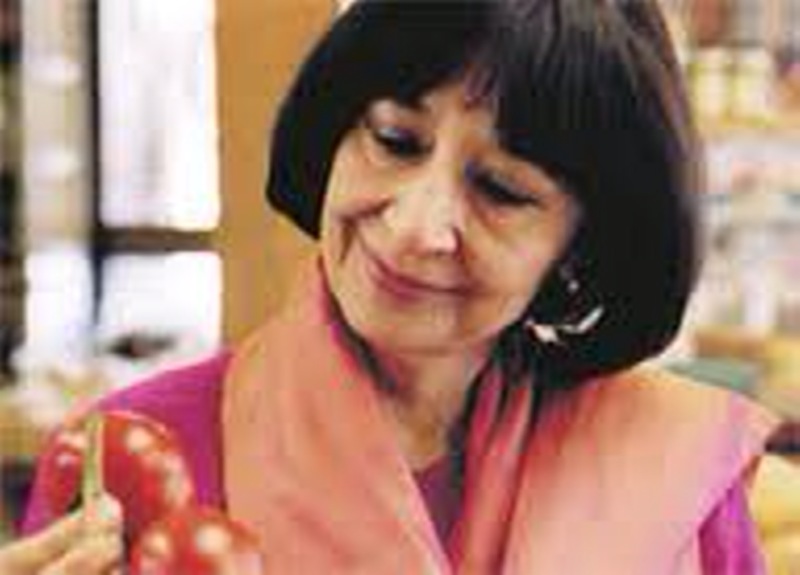Gumbo Is the Perfect Food When Tying on Some Mardi Gras Fun
 Tuesday, February 21, 2012 at 5:21PM
Tuesday, February 21, 2012 at 5:21PM It’s Mardi Gras all over the world right now and no food says “Carnival!” quite like a bowl gumbo from a warm Louisiana kitchen. And no food better represents the diversity that is critical to the culinary world that we all enjoy each and every day.

American gumbo owes its first conception to the French settlers who colonized the southern region of the Mississippi River for King Louis XIV, hence the name "Louis-iana", in 1682. Being on a great river and near the Gulf of Mexico, they adapted their beloved bouillabaisse fish stew from the French port city of Marseille to include the local ingredients that were then available.
 Home cooks who lived near the region's various waterways enriched their sea stew with crawfish, catfish, oysters, crab and shrimp. Those cooks who lived further inland added instead wild birds, deer, duck, squirrel, goose and boar instead – all flowing with the season’s availability.
Home cooks who lived near the region's various waterways enriched their sea stew with crawfish, catfish, oysters, crab and shrimp. Those cooks who lived further inland added instead wild birds, deer, duck, squirrel, goose and boar instead – all flowing with the season’s availability.
The resulting hunting trips and journeys along the area’s many bayous and streams, led to the French colonists encountering the region’s first inhabitants, members of the Choctaw Indian nation. The tribe’s resourceful cooks shared their knowledge of file’ - a unique flavorful powder created from ground sassafras tree leaves, with the newly arrived Europeans. Everyone agreed the resulting difference in the stew was simply amazing.
 As Louisiana expanded and grew in wealth, its cuisine continued to develope, embracing in a unique way all the influences that made it then and now one of America’s truly great cities.
As Louisiana expanded and grew in wealth, its cuisine continued to develope, embracing in a unique way all the influences that made it then and now one of America’s truly great cities.
Spanish influences added the tomato, still considered a poisonous fruit in the northern English colonies of Massachusetts and Connecticut, as well as bell peppers, celery and onions.
 Black slaves were soon brought from Africa to work in the vast landed cotton plantations and rice fields of the South in one of the darkest periods of American history. And though enslaved, many still remembered their homeland and added okra to flavor and thicken the stew. In fact, it is the Africa word for okra that gives gumbo its present name.
Black slaves were soon brought from Africa to work in the vast landed cotton plantations and rice fields of the South in one of the darkest periods of American history. And though enslaved, many still remembered their homeland and added okra to flavor and thicken the stew. In fact, it is the Africa word for okra that gives gumbo its present name.
Many of the freed black slaves of New Orleans (yes, there were freed black slaves in the city and many ran very successful businesses) were known as outstanding cooks. Many spoke French and ran restaurants, bakeries and taverns – all adding to the elegance and flare that is still the hallmark of Mardi Gras today.
 That unique style can be seen in how the freed black women of New Orleans worked around a restrictive and oppressive law that required all freed female slaves to wear a scarf or fabric tie around their head instead of the fashionable hats worn daily by the elegant white ladies of the City.
That unique style can be seen in how the freed black women of New Orleans worked around a restrictive and oppressive law that required all freed female slaves to wear a scarf or fabric tie around their head instead of the fashionable hats worn daily by the elegant white ladies of the City.
Working again with the ingredients at hand and their rich African heritage, these remarkable women created wrapped head turbans, called tignon, that were works of art and far more stunning than any milliner’s creation.
Today those head wraps form the basis of many of the much more elaborate head pieces worn in Mardi Gras parades in Rio de Janeiro and around the world.
 Similarly when file’ and okra were not available, these cooks reread their vaulued French cookbooks and created a roux of flour browned in pork lard that added color, texture and taste to the now legendary gumbo of Louisiana.
Similarly when file’ and okra were not available, these cooks reread their vaulued French cookbooks and created a roux of flour browned in pork lard that added color, texture and taste to the now legendary gumbo of Louisiana.
Later additions would include cayenne peppers, Tabasco and other hot seasonings, but to this day, the purist among southern cooks adds NO additional spices and depend on the essence of the base ingredients (along with the mandatory roux, okra or file’) to do the job.
Perhaps that simplicity is a lesson to us all as well as a reminder to do the simple with such flair and style that our efforts become as unique and as unforgettable as la belle New Orleans herself.
Laissez le Bon Temp Rouler! Longue vie Carnival!
Your Culinary World copyright Ana Kinkaid/Peter Schlagel 2012





























































































































































































